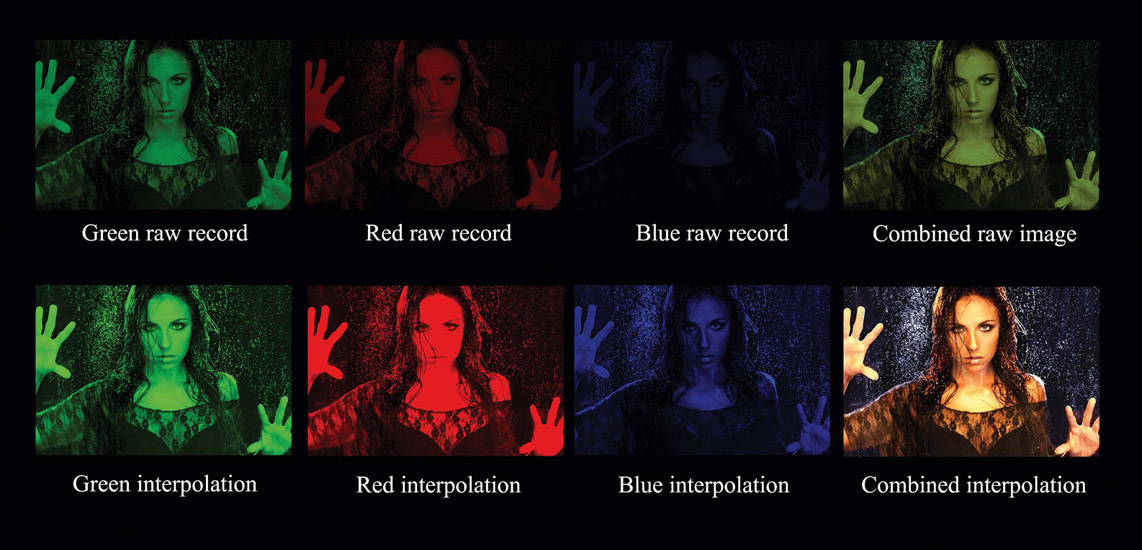1.9The “Raw” Deal: What’s Involved in Recording Raw Imagery?

A visual representation of the Bayer process. The top row illustrates how the sensor captures the green, red, and blue information from the image and combines that to make a muddy, ugly image. It is the interpolation process (bottom line) that fills in the missing colors to create a colorful image.
Digital imaging has evolved considerably over the course of the last two decades. In video— especially for a “cinematic” look—we have graduated from analog to digital, standard definition to high-definition, 30 frames per second to 24 frames per second, interlaced to progressive, small sensor ...
Get Behind the Lens now with the O’Reilly learning platform.
O’Reilly members experience books, live events, courses curated by job role, and more from O’Reilly and nearly 200 top publishers.

